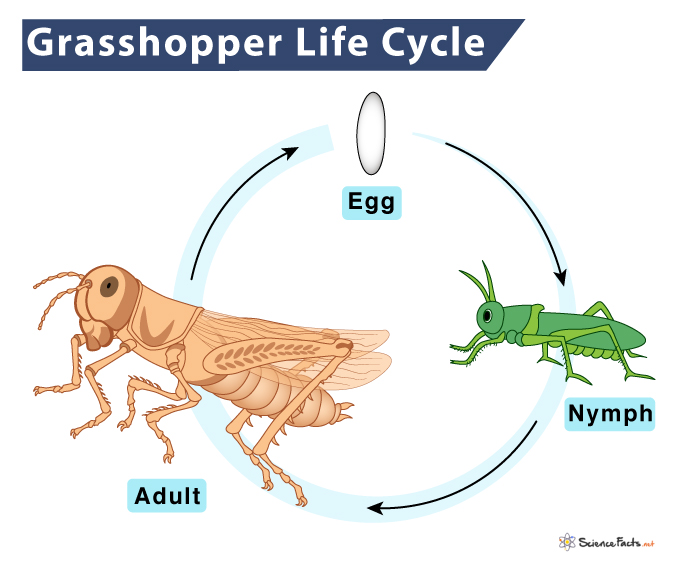Around 11,000 species of grasshoppers in different colors are found to exist today worldwide; most of them are herbivores. They vary in size, although an adult grasshopper is about 1 to 7 cm in length.
Stages of Grasshopper Life Cycle
It takes about 2 months for a grasshopper to complete its life cycle. During mating season, the male grasshopper deposits its sperm in the vagina of the female, which reaches the eggs through channels called micropyles.
1. Egg
The lifecycle of a grasshopper starts with the egg stage. During summer, female grasshoppers lay fertilized eggs in egg pods, usually in more than 10. Each pod consists of roughly 10-300 rice-shaped eggs, depending on the species. During the autumn and winter seasons, for almost 10 months, the eggs remain dormant (under the sand or leaf litter). Again during the next spring or early summer, the eggs hatch into nymphs, the offspring.
2. Nymph
It is the second stage in the lifecycle. Here, the young nymphs feed on succulent, soft plant foliage immediately after hatching. They are tiny look-alikes of the adult, except they are light-colored and without their wings. During this stage, the developing insects shed their skin (metamorphosis) five to six times. The process is called mounting. The nymph stage lasts about 5-10 days, based on the species and the weather conditions. As the nymph molts, with the increase in size, the wing pads start to develop on the thorax of the body until it matures into an adult grasshopper.
3. Adult
It is the third and final stage in their life cycle, which lasts about 12 months. Once the nymph has entered 25-30 days into the adult stage, it starts developing wings. Thus, when an egg matures into an adult, the grasshopper is 11 months old. Thus, after the grasshopper reaches adulthood, it lives for only one or two months. During the adult stage, the female grasshopper starts laying eggs. Once it starts laying eggs, the grasshopper continues until she dies. Studies have revealed that the survival rate of nymphs after hatching is almost 50%, as predators like birds, rodents, and lizards have high chances of being eaten. Thus, grasshoppers participate in the food chain and thus play a significant role in the effective functioning of the ecosystem.
